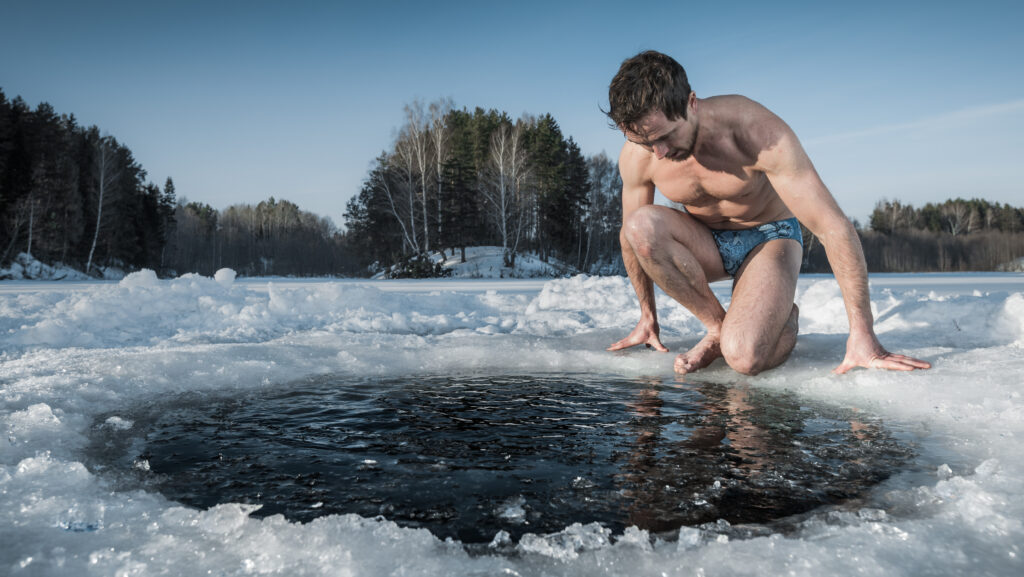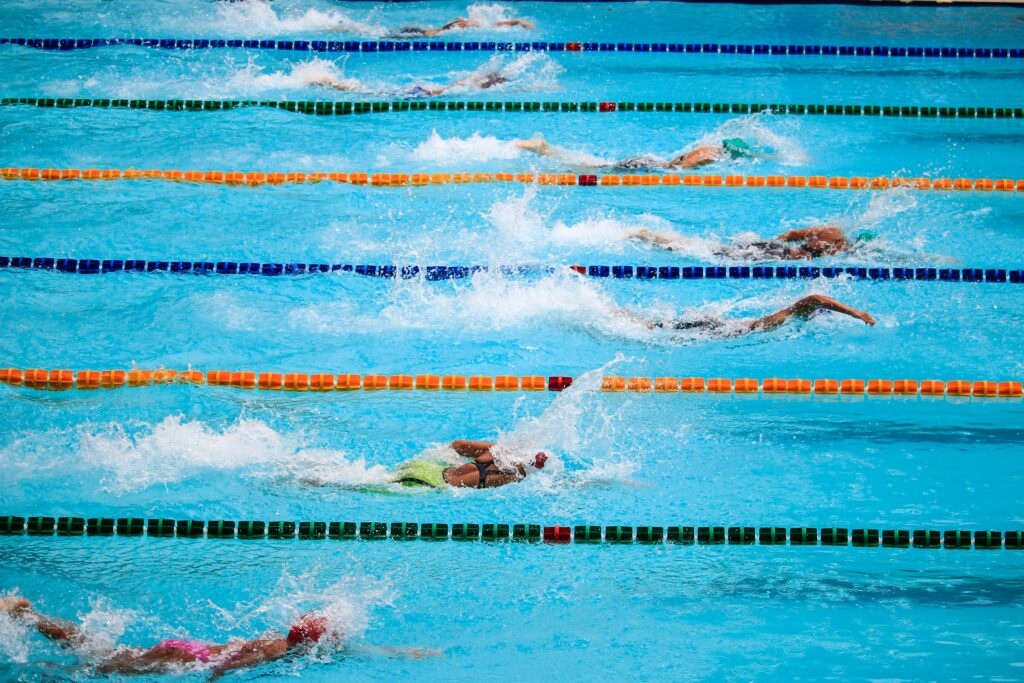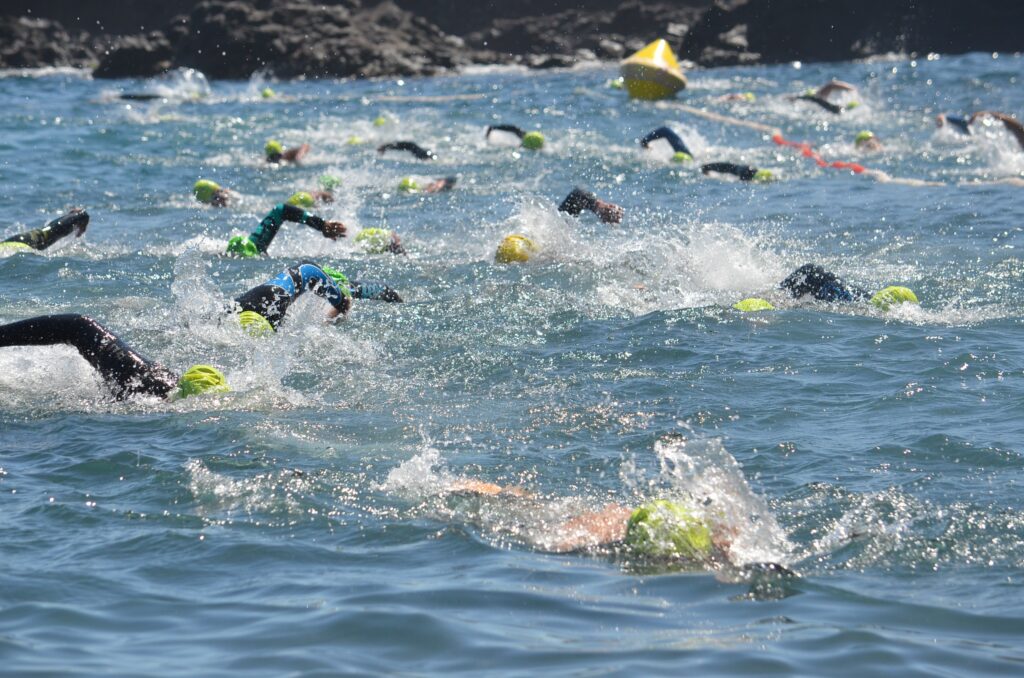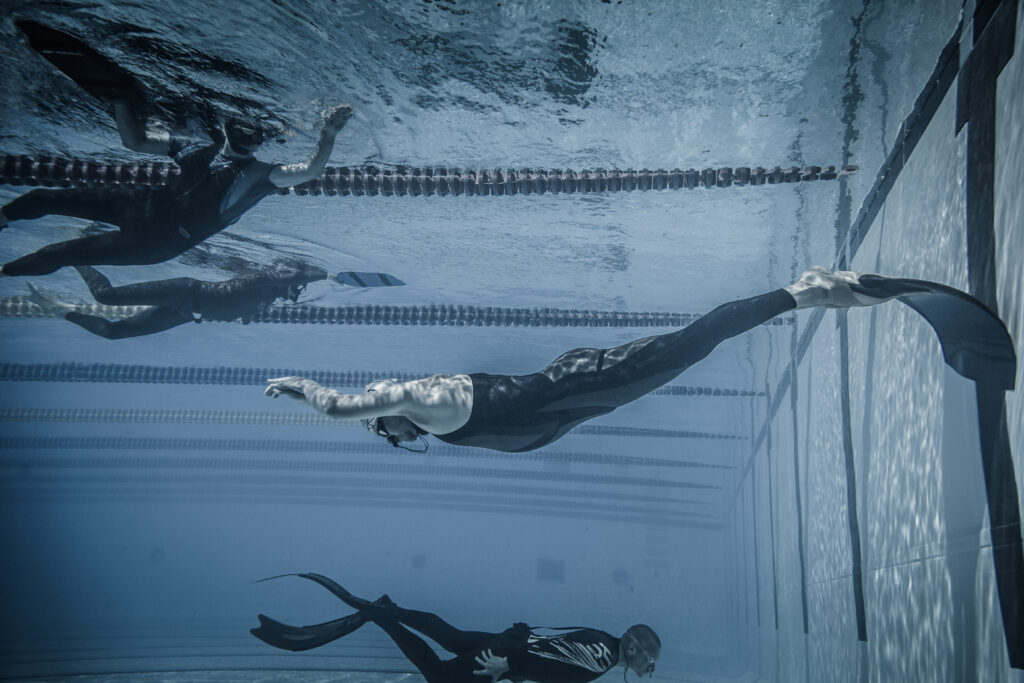Land training is a type of exercise that is performed on dry land and is used to complement swim pool training. It involves a range of exercises that aim to provide the body with a different stimulus from that gained in the water. Land training is designed to improve strength, flexibility, and endurance, and can be used to target specific muscle groups that are not used as much during swimming.
Swim pool training is the practice of swimming in a pool to improve swimming technique, endurance, and speed. It is a low-impact exercise that is easy on the joints and is suitable for people of all ages and fitness levels. Swim pool training can be used to improve cardiovascular fitness, build muscle, and burn calories.
Combining land and swim pool training can be an effective way to improve overall fitness and performance. Land training can help swimmers to build strength and flexibility, which can help to prevent injuries and improve swimming technique. Swim pool training can help to improve cardiovascular fitness and endurance, which can help swimmers to swim for longer periods of time without getting tired. By combining both types of training, swimmers can achieve a more well-rounded fitness routine that targets all areas of the body.
Key Takeaways
- Land training is a type of exercise that is used to complement swim pool training.
- Swim pool training is a low-impact exercise that is suitable for people of all ages and fitness levels.
- Combining land and swim pool training can be an effective way to improve overall fitness and performance.
Understanding Land Training
Land training is a type of cross-training that is done out of the pool. It is a form of exercise that is designed to supplement and enhance pool training. Land training can help swimmers improve their overall strength, flexibility, and endurance, which can lead to better performance in the pool.

Benefits of Land Training
There are several benefits of land training that can help swimmers improve their performance in the pool. Here are a few of the key benefits:
- Improved Strength: Land training can help swimmers build strength in their core, upper body, and legs. This can help them improve their stroke technique, increase their power, and reduce the risk of injury.
- Increased Flexibility: Land training can also help swimmers improve their flexibility, which can help them move more efficiently in the water. Improved flexibility can also reduce the risk of injury.
- Enhanced Endurance: Land training can help swimmers improve their cardiovascular endurance, which can help them swim longer distances without getting tired. This can be especially helpful for distance swimmers.
Types of Land Training
There are several types of land training that swimmers can do to supplement their pool training. Here are a few of the most common types:
- Strength Training: Strength training involves using weights or resistance bands to build strength in specific muscle groups. Swimmers can do exercises like squats, lunges, and bench presses to build strength in their legs, core, and upper body.
- Plyometric Training: Plyometric training involves doing explosive exercises like jump squats, box jumps, and burpees. These exercises can help swimmers build power and explosiveness, which can be helpful for sprinters.
- Flexibility Training: Flexibility training involves doing exercises like yoga, stretching, and foam rolling to improve flexibility and reduce the risk of injury.
Overall, land training is an important part of any swimmer’s training routine. By incorporating land training into their workouts, swimmers can improve their strength, flexibility, and endurance, which can lead to better performance in the pool.
Swim Pool Training Explained
Swim pool training is an essential part of any swimmer’s training program. It involves training in the water with a focus on improving swimming technique, endurance, and speed. In this section, we will explain the benefits of swim pool training and the different types of swim pool training.
Benefits of Swim Pool Training
Swim pool training provides numerous benefits to swimmers. Here are some of the key benefits:
- Improves Technique: Swim pool training allows swimmers to focus on improving their swimming technique. By working on their strokes, swimmers can become more efficient in the water, which can help them swim faster and longer.
- Increases Endurance: Swim pool training is an excellent way to increase endurance. By swimming for longer periods of time, swimmers can improve their cardiovascular fitness, which can help them swim faster and longer.
- Builds Strength: Swimming is a full-body workout that can help build strength and muscle. By using different strokes and intensities, swimmers can target different muscle groups and improve their overall strength.
- Low-Impact Exercise: Swimming is a low-impact exercise that is easy on the joints. This makes it an excellent choice for people who have joint pain or injuries.
Types of Swim Pool Training
There are several types of swim pool training that swimmers can incorporate into their training program. Here are some of the most common types:
- Aerobic Training: Aerobic training involves swimming at a steady pace for an extended period of time. This type of training is excellent for building endurance and improving cardiovascular fitness.
- Interval Training: Interval training involves swimming at high intensity for a short period of time, followed by a period of rest. This type of training is excellent for improving speed and power.
- Technique Training: Technique training involves focusing on improving swimming technique. This can involve drills, such as kicking drills or stroke drills, that help swimmers refine their technique and become more efficient in the water.
- Race-Specific Training: Race-specific training involves simulating race conditions during training. This can involve swimming at race pace, using race equipment, and practicing race starts and turns.
In conclusion, swim pool training is an essential part of any swimmer’s training program. It provides numerous benefits, including improving technique, increasing endurance, building strength, and being a low-impact exercise. There are several types of swim pool training that swimmers can incorporate into their training program, including aerobic training, interval training, technique training, and race-specific training.

Combining Land and Swim Pool Training
When it comes to swimming, land training can be an excellent way to complement pool training. By incorporating exercises that focus on strength, flexibility, and endurance, swimmers can improve their overall performance in the water. In this section, we will discuss some strategies for integrating land and swim pool training and balancing the two methods.
Integration Strategies
There are several ways to integrate land and swim pool training. One approach is to alternate between the two methods on different days. For example, a swimmer might do a land training session on Monday, followed by a swim pool session on Tuesday, and so on. This approach allows for a balanced training regimen that targets different muscle groups and helps prevent overuse injuries.
Another strategy is to combine land and swim pool training in the same session. For example, a swimmer might start with a warm-up on land, followed by a swim pool workout, and then finish with a cool-down on land. This approach can be particularly effective for improving overall endurance and cardiovascular fitness.
Balancing the Two Training Methods
When combining land and swim pool training, it’s important to balance the two methods to avoid overtraining or injury. One way to do this is to focus on different muscle groups during each session. For example, a land training session might focus on upper body strength, while a swim pool session might focus on lower body endurance.
Another way to balance the two methods is to vary the intensity and duration of each session. For example, a swim pool session might be shorter but more intense, while a land training session might be longer but less intense. By varying the intensity and duration, swimmers can avoid overtraining and ensure that they are getting the most out of each session.
In conclusion, combining land and swim pool training can be an effective way to improve overall performance in the water. By using integration strategies and balancing the two methods, swimmers can develop strength, flexibility, and endurance, and avoid overuse injuries.

Potential Challenges and Solutions
Common Hurdles
When it comes to land training, there are a few common hurdles that swimmers may face. One of the most common challenges is finding time to fit land training into an already busy schedule. Many swimmers have multiple pool sessions per week, and adding land training on top of that can be difficult.
Another challenge is finding the right exercises that complement pool training. The goal of land training is to provide the body with a different stimulus from what is gained in the water, but it can be challenging to find exercises that work well together.
Overcoming Challenges
To overcome the challenge of finding time for land training, it can be helpful to schedule it in advance. This way, it becomes a part of the regular training routine, and swimmers are more likely to stick to it. Additionally, incorporating land training into pool training sessions can help save time. For example, swimmers can do a quick land training session before or after a pool session.
To find the right exercises for land training, it can be helpful to work with a coach or trainer who has experience in this area. They can help create a plan that complements pool training and targets areas that need improvement. Additionally, incorporating a variety of exercises can help keep things interesting and prevent boredom.
Overall, while there may be challenges associated with land training, the benefits of incorporating it into a swim training routine are worth it. With a little planning and effort, swimmers can overcome these challenges and see improvements in their performance.
Conclusion
In conclusion, land training is an essential part of a swimmer’s training regimen, and it should be seen as complementary to pool sessions. The land environment allows us to provide greater resistance to particular exercises than in the water, which can help to improve overall strength and performance.
By incorporating land-based strength and conditioning into a training regimen, swimmers can gain a competitive edge. Depending on the competition level of the individual, the sport of swimming requires different levels of strength and conditioning. Therefore, it is essential to examine the three phases of the swim for strength and conditioning exercise considerations: the start, the swim, and the turn.
Dry-land training programs have been prescribed by swimming coaches over the years to improve overall swimming performance, including starts, clean swimming, turns, and finish. The effects of dry-land strength and conditioning programs on swimming turns have been examined in a systematic review, which found that such programs can improve swimming turn performance.
Swim England has updated its recommendations on land training and open water club activity, allowing for a coach to participant ratio of one to five. Six adults from different households are able to meet in an outside environment to undertake land training, which is an excellent opportunity to improve overall strength and performance.
Overall, land training is a vital component of a swimmer’s training regimen, and it should be incorporated into a training program to improve overall strength, performance, and competitive edge.
Frequently Asked Questions
What are some effective exercises for land training to improve swimming performance?
Land training can provide a variety of exercises that can improve swimming performance. Some effective exercises include resistance band exercises, bodyweight exercises, and weightlifting exercises. Resistance band exercises can help swimmers improve their upper body strength, while bodyweight exercises such as push-ups and planks can help improve core strength. Weightlifting exercises such as squats and deadlifts can help improve lower body strength and power, which can translate into better swimming performance.
How does land training complement swim pool training in terms of strength and conditioning?
Land training can complement swim pool training by providing swimmers with a different type of stimulus. While swimming provides a low-impact, full-body workout, land training can provide a high-impact, targeted workout that can help improve strength, power, and flexibility. Land training can also help swimmers prevent injury by improving their overall fitness and conditioning.
What are the benefits of incorporating land training into a swimmer’s training regimen?
Incorporating land training into a swimmer’s training regimen can provide a number of benefits. Land training can help improve overall fitness and conditioning, which can help prevent injury and improve swimming performance. Land training can also help swimmers develop strength, power, and flexibility, which can translate into better swimming performance. Additionally, land training can provide swimmers with a variety of exercises that can help prevent boredom and burnout.
Can land training help prevent swimming-related injuries?
Yes, land training can help prevent swimming-related injuries by improving overall fitness and conditioning. Additionally, land training can help swimmers develop strength, power, and flexibility, which can help prevent common swimming-related injuries such as shoulder impingement and lower back pain.
Are there specific types of land training that are more beneficial for swimmers?
There are a variety of types of land training that can be beneficial for swimmers. Some effective types of land training include resistance band exercises, bodyweight exercises, and weightlifting exercises. It is important for swimmers to work with a qualified coach or trainer to develop a land training regimen that is tailored to their specific needs and goals.
What is the recommended frequency and duration of land training for swimmers?
The recommended frequency and duration of land training for swimmers can vary depending on a number of factors, including age, fitness level, and training goals. Generally, swimmers should aim to incorporate land training into their training regimen at least two to three times per week. The duration of each land training session should be approximately 30-60 minutes, depending on the intensity of the workout. It is important for swimmers to work with a qualified coach or trainer to develop a land training regimen that is tailored to their specific needs and goals.







